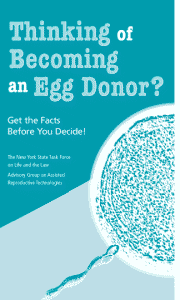There are many accusations that have been flying about, but there have been as many misses as hits in the criticisms of Hwang and his colleagues. So what exactly did they do that was wrong? What should we learn from their mistakes as we go forward?
 Some of the accusations have centered on the issue of the payment of the egg donors. Our own Glenn McGee has claimed that this is the major ethical problem in the research. This seems to miss the mark. The question of whether it is appropriate to pay donors (and if so, how much) is a controversial issue with many ethicists on each side of the debate. In the absence of agreement, and no laws or guidelines to the contrary, it would be a mistake to condemn Hwang or his colleagues for paying donors at the time that the payments were made. Going forward, the NAS has recommended that donors should not be paid, and possibly more importantly, Prop. 71 in California forbids such payment. Thus, the major argument at this point is the value of consistencyit will be difficult for the field if cell lines that are acceptable in some states are not acceptable in othersso it will be best if everyone accords with the same standards (even if there is still some question about what the right thing to do is).
Some of the accusations have centered on the issue of the payment of the egg donors. Our own Glenn McGee has claimed that this is the major ethical problem in the research. This seems to miss the mark. The question of whether it is appropriate to pay donors (and if so, how much) is a controversial issue with many ethicists on each side of the debate. In the absence of agreement, and no laws or guidelines to the contrary, it would be a mistake to condemn Hwang or his colleagues for paying donors at the time that the payments were made. Going forward, the NAS has recommended that donors should not be paid, and possibly more importantly, Prop. 71 in California forbids such payment. Thus, the major argument at this point is the value of consistencyit will be difficult for the field if cell lines that are acceptable in some states are not acceptable in othersso it will be best if everyone accords with the same standards (even if there is still some question about what the right thing to do is).
McGee has raised an additional (but separate) concernviz. that the women who donated were not adequately informed of the risks. This concern has been raised several times (including by myself and my colleague Mildred Cho). The mere fact that some women reported that they did not know of the risks of egg donation is not sufficient to establish that consent was not obtained or that full disclosure did not take place. The standards for disclosure are fairly clearand time will tell whether they were met in this research (it seems as if a good faith effort to do so took place in all of their later work).
The more serious objection is that the donors included subordinate women who worked in Hwangs lab. Even if Hwang was truly unaware of the donation, this would clearly represent an institutional ethics breach and merits condemnation. No one in the ethics community is defending this practicethe only question is over precisely where within the institution blame lies.
While it is generally not a good thing to lie and doing so to journalists is never a good strategy, a more serious ethical breach may have occurred if Hwang lied to the editors of Science in response to the queries that they would likely have made. This would be an egregious breach of behavior. From the early roots of science (see Shapin’s Social History of Truth or Shapin and Schaeffer’s Leviathan and the Air-pump) publication has been about virtual witnessing. For science to work, the testimony of its practitioners must be beyond reproach. Otherwise, we would not believe the reports of experiments. This is one of the reasons why there is so much hand-wringing over fabrication, falsification and plagiarism (is spite of their low frequency) in research ethics.
What should we learn going forward? Above all, the contrast between the ethical conduct of their later research and their earlier work (where all of the allegations have centered) highlights what happens when researchers who are enthusiastically pursuing valuable research, run in to obstacles in the form of ethical or legal requirements. The temptation to cut corners in the name of the higher good of the research is a powerful and familiar storyone thinks of the Gelsinger case and many other examples of similar corner cutting. And it means that we must be particularly vigilant precisely when these standards are most likely to be most painful. It is easy to hold the bar high when it is effortless to do so. This also means that we must take care to make sure that the obstacles to research that are imposed are minimized as much as possible so that this important research can go forward.
-David Magnus